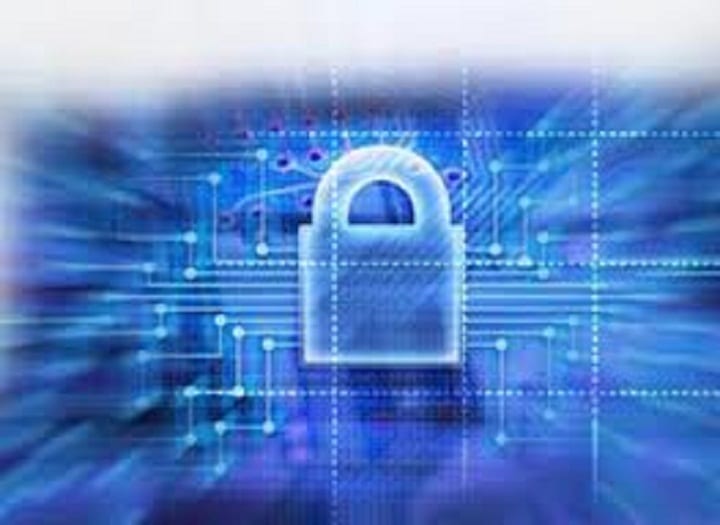
 When you’re talking about physical security, the first thing that might come to mind is the “rent-a-cop” who drives around in his jeep, flashing a light on your building to make sure there are no hooligans hanging around. Of course, we’re not living in an 80s movie, and hooligans have been replaced by high-tech digital criminals. In this technological age, even physical security has become a digital endeavor – and one most businesses should consider, especially if they store valuable or sensitive data. What is digital physical security? Digital physical security covers everything from video surveillance to security systems, key card access systems to IP cameras – and it is the IP camera that is really revolutionizing the physical security industry. There are several advantages to choosing IP cameras over analog.
When you’re talking about physical security, the first thing that might come to mind is the “rent-a-cop” who drives around in his jeep, flashing a light on your building to make sure there are no hooligans hanging around. Of course, we’re not living in an 80s movie, and hooligans have been replaced by high-tech digital criminals. In this technological age, even physical security has become a digital endeavor – and one most businesses should consider, especially if they store valuable or sensitive data. What is digital physical security? Digital physical security covers everything from video surveillance to security systems, key card access systems to IP cameras – and it is the IP camera that is really revolutionizing the physical security industry. There are several advantages to choosing IP cameras over analog.
No Cables Required
Analog video provides composite outputs and requires you to run video cable through the walls between the camera locations and back to either a closed-captioned TV system or a digital video recorder. IP cameras, however, function more like IP phones, where the device uses network traffic instead of an analog signal in order to deliver feed to a network video recorder (NVR). In other words, with an IP camera, you can send the video to a monitor without running a bunch of cable to do it.
Offsite Monitoring Capability
IP camera security offers companies a much more robust system with the power to capture and save data. An IP camera security system allows you to capture the data in order to keep a history of your surveillance. It offers you the the capability of playing back the recorded data, and you can search for specific data if you need to. It can be delivered to an offsite monitor because you can deliver the video over your network and not have it hardwired to a closed-caption system.
High-Quality Video
One of the biggest advantages of the IP camera is the quality of video. You can think of the difference between analog and IP cameras as you would think of the difference between standard definition TV and HDTV. The resolution of an analog camera is D-1. The IP camera has a new H.264 video codec (the video encoder scheme). Commonly seen codecs are mpeg and QuickTime, but the codec for an IP security camera allows the video feed to be compressed in such a way that it does not affect the quality of the video but substantially affects the size. This ability to compress the video without losing quality makes it possible to send that video stream over the internet and over your network without having to use too much of your bandwidth to do it. It is a major evolution in physical security.
Superior Flexibility
The main reason to choose IP camera security instead of analog is flexibility. An analog camera uses a DVR, and DVRs are fixed appliances. It’s no different than the cable service you have at home for your television, which, until recently, required you to have a DVR for each TV – what you stored on the DVR in your living room could not be watched in your bedroom, and vice versa. When it comes to network security, an analog DVR is just like your old cable-box DVR, where you were locked to that one device for recording. There is no way to access one camera system from another device. There might be remote viewing software, but it still is locked to a DVR.
Every analog camera physically has to have a cable run to the back to the DVR system. You might have 30 – 40 cables running to the DVR from all of the analog cameras, and each building would have to have a separate system. Because IP cameras are network devices, instead of running hundreds of feet of cable, we can use switches to plug in the IP camera cables. The camera grabs an IP address just like your computer or VoIP phone would, and you are able to access the network and use NVR software on a server or a virtual server and – and here’s the critical point – access that feed from wherever you are. It makes adding additional IP cameras incredibly easy, and you can add cameras (just like VoIP phones) in a variety of different locations but have them feed back to the same NVR system. Corporate offices can monitor the physical security of their regional branches. The ability to funnel your physical security monitoring from your IP camera over the internet and utilize that network to access your video streams from a remote location is a real game-changer in physical security.
thinkCSC offers a cloud-managed hosted IP camera security service to safely archive and access your video from anywhere. For more information on IP camera security and how thinkCSC can help you, please contact us.
